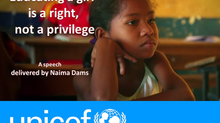Space Tourism
- Wikipedia
- Nov 5, 2017
- 3 min read

Space tourism is space travel for recreational, leisure or business purposes. There are several different types of space tourism, including orbital, sub orbital and lunar space tourism. To date orbital space tourism has been performed only by the Russian Space Agency. Work also continues towards developing sub-orbital space tourism vehicles. This is being done by aerospace companies like Blue Origin and Virgin Galactic. In addition, SpaceX (an aerospace manafacturer) announced in 2017 that they are planning on sending two space tourists on a lunar free return trajectory aboard their Dragon V2 spacecraft in 2018.The spacecraft will be launched by the Falcon Heavy rocket.
During the period from 2001 to 2009, the publicized price for flights brokered by Space Adventures to the International Space Station aboard a Russian Soyuz spacecraft were in the range of US$20–40 million. 7 space tourists made 8 space flights during this time. Some space tourists have signed contracts with third parties to conduct certain research activities while in orbit.
Russia halted orbital space tourism in 2010 due to the increase in the International Space Station crew size, using the seats for expedition crews that would have been sold to paying spaceflight participants. Orbital tourist flights were set to resume in 2015 but one planned was postponed indefinitely and none have occurred since 2009.
As an alternative term to "tourism", some organizations such as the Commercial Spaceflight Federation use the term "personal spaceflight". The Citizens in Space project uses the term "citizen space exploration".
Orbital space tourism
At the end of the 1990s, MirCorp, a private venture that was by then in charge of the space station, began seeking potential space tourists to visit Mir in order to offset some of its maintenance costs. Dennis Tito, an American businessman and former JPL scientist, became their first candidate. When the decision to de-orbit Mir was made, Tito managed to switch his trip to the International Space Station (ISS) through a deal between MirCorp and US-based Space Adventures, Ltd., despite strong opposition from senior figures at NASA; from the beginning of the ISS expeditions, NASA stated it wasn't interested in space guests.[11] Nonetheless, Dennis Tito visited the ISS on April 28, 2001, and stayed for seven days, becoming the first "fee-paying" space tourist. He was followed in 2002 by South African computer millionaire Mark Shuttleworth. The third was Gregory Olsen in 2005, who was trained as a scientist and whose company produced specialist high-sensitivity cameras. Olsen planned to use his time on the ISS to conduct a number of experiments, in part to test his company's products. Olsen had planned an earlier flight, but had to cancel for health reasons. The Subcommittee on Space and Aeronautics Committee On Science of the House of Representatives held on June 26, 2001 reveals the shifting attitude of NASA towards paying space tourists wanting to travel to the ISS. The hearing's purpose was to, "Review the issues and opportunities for flying nonprofessional astronauts in space, the appropriate government role for supporting the nascent space tourism industry, use of the Shuttle and Space Station for Tourism, safety and training criteria for space tourists, and the potential commercial market for space tourism. The subcommittee report was interested in evaluating Dennis Tito's extensive training and his experience in space as a nonprofessional astronaut.
By 2007, space tourism was thought to be one of the earliest markets that would emerge for commercial spaceflight. However, as of 2014 this private exchange market has not emerged to any significant extent.
Space Adventures is the only company that has sent paying passengers to space. In conjunction with the Federal Space Agency of the Russian Federation and Rocket and Space Corporation Energia, Space Adventures facilitated the flights for all of the world's first private space explorers. The first three participants paid in excess of $20 million (USD) each for their 10-day visit to the ISS.
in February, 2003, the space shuttle Columbia disintegrated on re-entry into the Earth's atmosphere, killing all seven astronauts aboard. After this disaster, space tourism on the Russian Soyuz program was temporarily put on hold, because Soyuz vehicles became the only available transport to the ISS. On July 26, 2005, Space Shuttle Discovery (mission STS-114) marked the shuttle's return to space. Consequently, in 2006, space tourism was resumed. On September 18, 2006, an Iranian American businesswoman named Anousheh Ansari became the fourth space tourist (Soyuz TMA-9).[16]) On April 7, 2007, Charles Simonyi, an American businessman of Hungarian descent, joined their ranks (Soyuz TMA-10). Simonyi became the first repeat space tourist, paying again to fly on Soyuz TMA-14 in March–April 2009. Canadian Guy Laliberté became the next space tourist in September, 2009 aboard Soyuz TMA-16. The British singer Sarah Brightman initiated plans (costing a reported $52 million) and participated in preliminary training in early 2015, expecting to then fly (and to perform while in orbit) in September 2015, but in May 2015 she postponed the plans indefinitely.













































Comentários